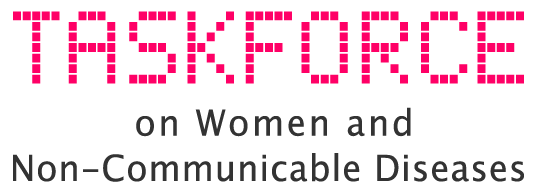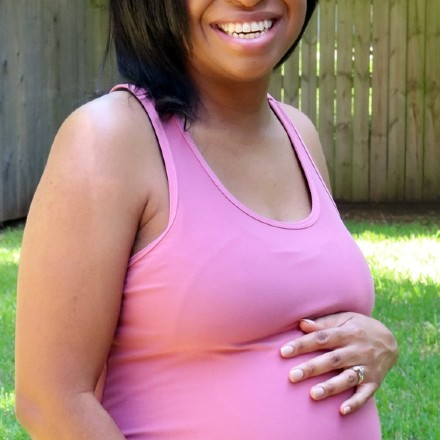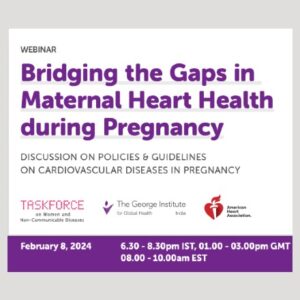American Heart Association Scientific Sessions 2023, Late-Breaking Science Abstract in LBS.08
Research Highlights:
- An artificial intelligence-enabled digital stethoscope may be a simple and effective way to diagnose cardiac dysfunction during and soon after pregnancy.
- The stethoscope records electrocardiograms and heart sounds and then uses an AI algorithm to predict the likelihood of having a weakened heart muscle.
- AI-guided screening using the digital stethoscope identified twice as many cases of pregnancy-related cardiomyopathy among women in Nigeria, compared to standard clinical care.
Embargoed until 9:45 a.m. ET, Monday, Nov. 13, 2023
PHILADELPHIA, Nov. 13, 2023 — Electrocardiogram (EKG) based screening using an artificial intelligence-enabled digital stethoscope may detect peripartum cardiomyopathy, a disease of the heart muscle in pregnant and recently pregnant women, at double the rate of standard obstetric care including clinical EKGs, according to late-breaking science presented today at the American Heart Association’s Scientific Sessions 2023. The meeting, Nov. 11-13, in Philadelphia, is a premier global exchange of the latest scientific advancements, research, and evidence-based clinical practice updates in cardiovascular science.
In a study of almost 1,200 Nigerian women who were pregnant or had recently had a baby, peripartum cardiomyopathy was detected twice as often among study participants when EKG testing was performed with a digital stethoscope using an AI algorithm, compared to clinical EKG in addition to routine obstetric care.
“We demonstrated for the first time in an obstetric population that AI-guided screening using a digital stethoscope improved the diagnosis of this potentially life-threatening and treatable condition,” said lead study author Demilade A. Adedinsewo, M.D., M.P.H., an assistant professor of medicine in the department of cardiovascular medicine at Mayo Clinic in Jacksonville, Florida.
“This research can change current clinical practice from one that is reactive and symptom-driven to a more proactive approach of identifying pregnancy-related cardiac dysfunction using a simple, low-cost and effective screening tool,” she said. “Earlier diagnosis would facilitate prompt and appropriate management of cardiomyopathy and reduce associated disease and death.”
Peripartum cardiomyopathy is a type of heart failure that can affect women late in pregnancy or after pregnancy. The disease weakens the heart, resulting in a decrease in the amount of blood that is pumped from the heart to other parts of the body. It is typically diagnosed towards the end of pregnancy or in the months following and may be difficult for health professionals to detect because many of the symptoms are similar to those seen with normal pregnancy, such as shortness of breath and swelling in the feet and legs, according to the American Heart Association.
The rate of peripartum cardiomyopathy is somewhat low in the U.S., affecting 1 in every 1,000 to 4,000 pregnancies, according to the Association. It is more prevalent in Nigeria, which has the highest reported incidence of peripartum cardiomyopathy worldwide, with it impacting as many as 1 in 96 pregnancies, according to Adedinsewo.
The AI screening included a digital stethoscope to record electrical activity of the heart and record heart sounds. The women in the AI intervention group also had a study-prescribed echocardiogram upon enrollment in the study to validate the effectiveness of the AI algorithm in this group. The AI-enabled stethoscope used an algorithm that was originally developed with 12-lead EKG data and modified for use with a single-lead EKG recorded with a digital stethoscope, making it capable of predicting the likelihood of left ventricular dysfunction. Participants in the control group had traditional EKG testing without use of the AI-assisted digital stethoscope and their results were evaluated by health professionals.
An echocardiogram was used to measure left ventricular ejection fraction, which gauges the heart’s pumping ability. A normal ejection fraction level for the heart is between 55% and 70%. In this study, a left ventricular ejection fraction of less than 50% was the criteria used for a cardiomyopathy diagnosis.
Between August 2022 and September 2023, the study enrolled more than 1,000 Nigerian women who were pregnant or had delivered a baby within the previous 12 months.
The study found:
- Pregnancy-related cardiomyopathy was detected in 4% of pregnant and postpartum women in the group screened with the AI-enabled digital stethoscope.
- The cardiomyopathy detection rate was 1.8% in the control group, suggesting that half of the cases of cardiomyopathy are likely undetected with usual care.
“While we expected AI-guided screening to improve the diagnosis of cardiomyopathy, we did not anticipate the frequency of cardiomyopathy diagnosis would be doubled,” Adedinsewo said. “Additional large trials enrolling a diverse group of women in other geographic locations are needed to evaluate the impact of AI-guided screening on cardiomyopathy diagnosis as well as its impact on adverse maternal outcomes.”
Background and study details:
- A total of 1,195 women between the ages of 18 and 49 were enrolled in the study and completed necessary baseline tests. About 73% were pregnant at the beginning of the study; and 39% were in their third trimester.
- Study participants were enrolled from six teaching hospitals in Nigeria.
- The women were randomly assigned, with 587 women in the AI-assisted intervention arm and 608 in the control group.
According to the American Heart Association, heart disease is the No. 1 killer of new mothers in the U.S. There is a maternal health crisis in America and a 2023 joint statement from the Association of Black Cardiologists, American College of Cardiology and American Heart Association called pregnancy “nature’s first cardiac stress test” for a woman – providing a window to future cardiovascular health.
The causes of peripartum cardiomyopathy are still unclear, yet with treatment, many affected patients return to normal heart function. For some, however, it may lead to more severe heart failure, so early detection and treatment are important, according to the American Heart Association.
The study’s limitations include that the rate of cardiomyopathy observed among women in the study who were enrolled at teaching hospital sites may not reflect the frequency in the general obstetric population in Nigeria. In addition, the selected cut-off value for cardiomyopathy detection in this study was left ventricular ejection fraction less than 50%; however, this is different from the original training target (less than 40%) of the AI algorithm adapted for use with the digital stethoscope. The authors observed improved detection of ejection fraction less than 40% compared to less than 50%. AHA guidelines defines less than 40% reduced ejection fraction as heart failure.
Co-authors, disclosures and funding sources are listed in the abstract.
Statements and conclusions of studies that are presented at the American Heart Association’s scientific meetings are solely those of the study authors and do not necessarily reflect the Association’s policy or position. The Association makes no representation or guarantee as to their accuracy or reliability. Abstracts presented at the Association’s scientific meetings are not peer-reviewed, rather, they are curated by independent review panels and are considered based on the potential to add to the diversity of scientific issues and views discussed at the meeting. The findings are considered preliminary until published as a full manuscript in a peer-reviewed scientific journal.
The Association receives funding primarily from individuals; foundations and corporations (including pharmaceutical, device manufacturers and other companies) also make donations and fund specific Association programs and events. The Association has strict policies to prevent these relationships from influencing the science content. Revenues from pharmaceutical and biotech companies, device manufacturers and health insurance providers and the Association’s overall financial information are available here.
Additional Resources:
- Multimedia is available on the right column of the release link https://newsroom.heart.org/news/ai-technology-improved-detection-of-heart-disease-during-and-after-pregnancy?preview=14cca6f45ea1b719f21bacbe24a98e3b
- After Nov. 13, view the abstract in the AHA Scientific Sessions 2023 Online Program Planner
- ·American Heart Association health information: Pregnancy and Heart Disease
- ·American Heart Association health information: What is an EKG?
- About Scientific Sessions 2023
- For more news at AHA Scientific Sessions 2023, follow us on X (formerly Twitter) @HeartNews,#AHA23
Source: Newsroom.heart.org




